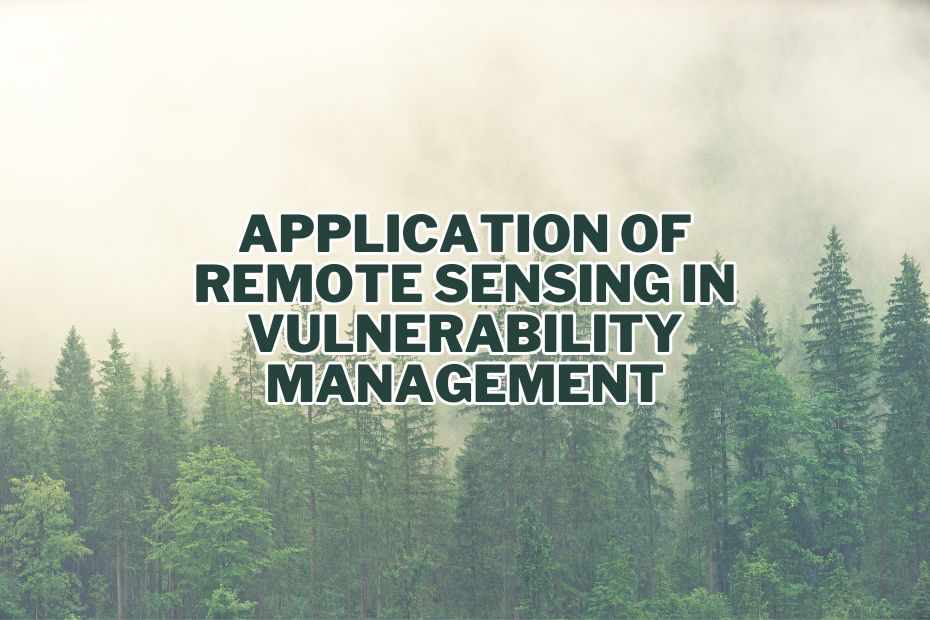In today’s ever-evolving technological landscape, the role of remote sensing in vulnerability management has become increasingly vital. As organizations strive to safeguard their assets and data from potential threats, remote sensing technologies offer a range of applications that enhance security measures. This article delves into key application of remote sensing in vulnerability management, shedding light on how this technology can fortify defenses and mitigate risks.
Remote sensing plays a pivotal role in vulnerability management by offering real-time data for monitoring critical infrastructure, conducting geospatial threat analysis, and tracking environmental changes. It aids in early warning systems, incident response, disaster recovery, and enhances cybersecurity. Additionally, remote sensing supports predictive analytics, asset tracking, and regulatory compliance.
Application of Remote Sensing In Vulnerability Management
In today’s technology-driven era, the application of remote sensing in vulnerability management is paramount. This sophisticated tool extends its influence across various sectors, ensuring timely interventions, data-driven insights, and comprehensive risk management. Let’s explore the myriad facets of this application.
1. Monitoring Critical Infrastructure
Remote sensing allows us to continuously monitor critical infrastructures, ensuring their functionality and security. Through high-resolution satellite imagery and sensors, authorities can detect anomalies, wear and tear, and potential threats to structures like bridges, dams, and energy plants. Timely detection can lead to prompt action, preserving the infrastructure’s integrity.
2. Geospatial Threat Analysis
Understanding threats in a geospatial context offers an edge in risk assessment. Remote sensing in defence harnesses spatial data to identify potential threats based on geographical patterns and historical data. This geospatial perspective provides a dynamic risk landscape, enhancing national and regional security measures.
3. Environmental Monitoring
With climate change posing significant threats, remote sensing in environmental monitoring helps track these changes. This includes monitoring deforestation rates, observing marine ecosystems, and assessing air quality. These insights lead to informed decision-making, ensuring a sustainable future.
4. Early Warning Systems
One of the remarkable advantages of remote sensing is its ability to provide early warnings, especially in natural disasters like cyclones and floods. Remote sensing in cyclone predictions and flood management have saved countless lives, offering timely alerts and facilitating evacuations.
5. Incident Response
In the event of unforeseen incidents, remote sensing ensures swift and efficient response. By providing real-time imagery and data, first responders can determine the severity, reach, and impact of the incident, strategizing their approach for optimal outcomes.
6. Disaster Recovery
Post-disaster, the journey to recovery is strenuous. Remote sensing aids in assessing damage, identifying affected areas, and mapping out recovery strategies. Applications in earthquake aftermath assessments exemplify its crucial role in rehabilitation efforts.
7. Cybersecurity
While typically associated with physical realms, remote sensing also influences the digital sphere. Satellites equipped with sensors detect cyber threats, ensuring the digital safety of critical infrastructures and sensitive data.
8. Supply Chain Security
Ensuring a secure supply chain is essential for economies. Remote sensing facilitates the monitoring of transportation routes, warehousing, and logistic hubs. This real-time surveillance negates potential threats and ensures seamless operations.
9. Predictive Analytics
Data-driven insights from remote sensing enable predictive analytics, forecasting potential vulnerabilities based on current patterns. This foresight is instrumental in proactive risk management, ensuring preparedness for plausible threats.
10. Asset Tracking
Asset management and tracking get a boost with remote sensing. From tracking fleet movements to monitoring equipment in vast mining operations like gold mining, remote sensing offers accuracy and efficiency.
11. Regulatory Compliance
Many industries are subject to stringent regulations, and non-compliance can lead to vulnerabilities such as fines or reputational damage. Remote sensing aids in regulatory compliance by monitoring activities and ensuring adherence to environmental, safety, and quality standards.
Conclusion
The application of remote sensing in vulnerability management is expansive, touching multiple sectors and influencing a plethora of operations. From enhancing our predictive capacities to ensuring real-time responses, the integration of remote sensing technologies is shaping a future where risks are managed with greater precision, foresight, and efficiency.
FAQs: Application of Remote Sensing In Vulnerability Management
What is remote sensing in vulnerability management?
Remote sensing in vulnerability management refers to the use of satellite or aerial imagery and sensors to monitor, detect, and respond to vulnerabilities in various sectors.
How is remote sensing used in cybersecurity?
Remote sensing can detect cyber threats, safeguarding critical infrastructures and sensitive data in the digital domain.
How can remote sensing help in disaster vulnerability assessment?
Remote sensing provides real-time data on environmental conditions and can help identify vulnerable areas, monitor changes, and assess the impact of disasters like floods, wildfires, and hurricanes.
How does remote sensing aid in agriculture vulnerability assessment?
Remote sensing helps assess crop health, soil moisture levels, and pest outbreaks, allowing farmers to adapt to changing conditions and mitigate crop vulnerabilities.
What are the limitations of remote sensing in vulnerability management?
Remote sensing has limitations, including cloud cover interference, cost, and limited temporal resolution. It should be combined with ground data and other sources for comprehensive vulnerability assessment.
